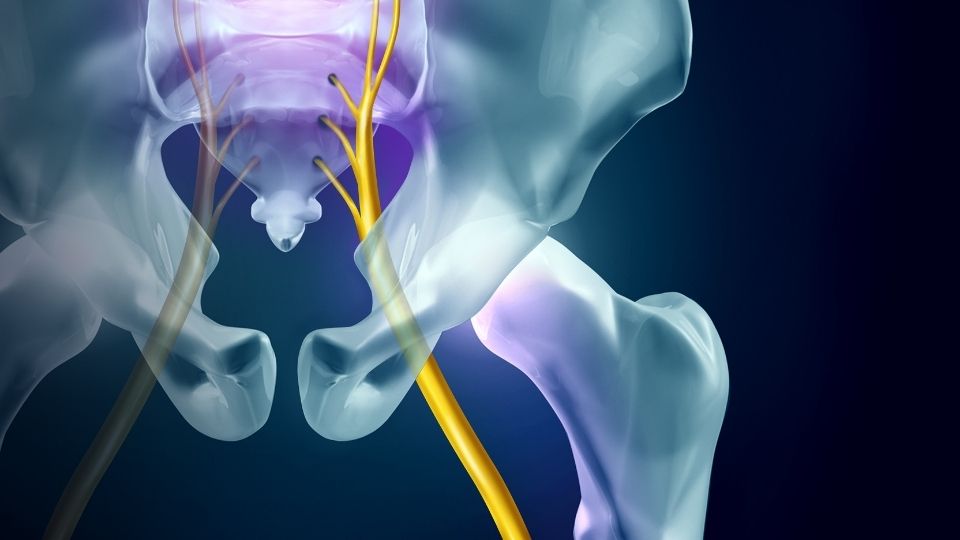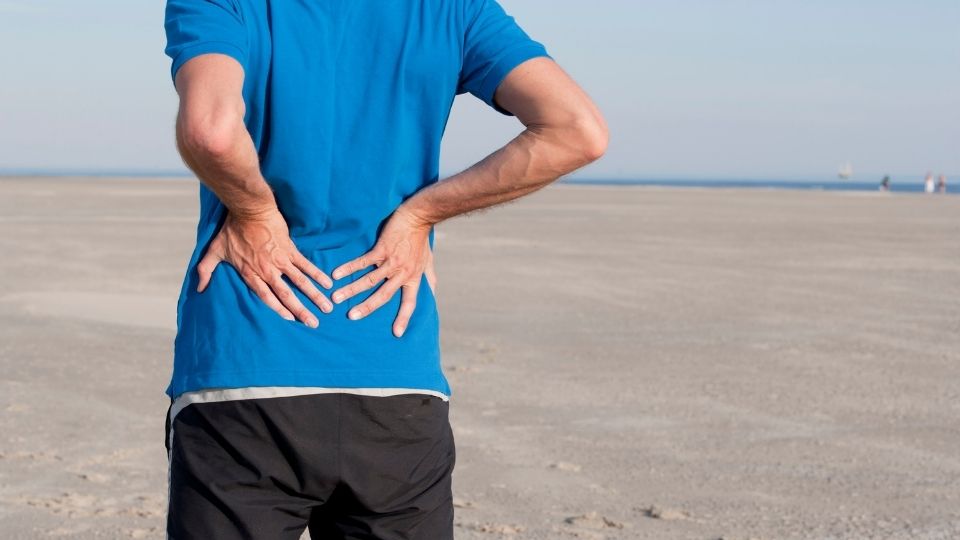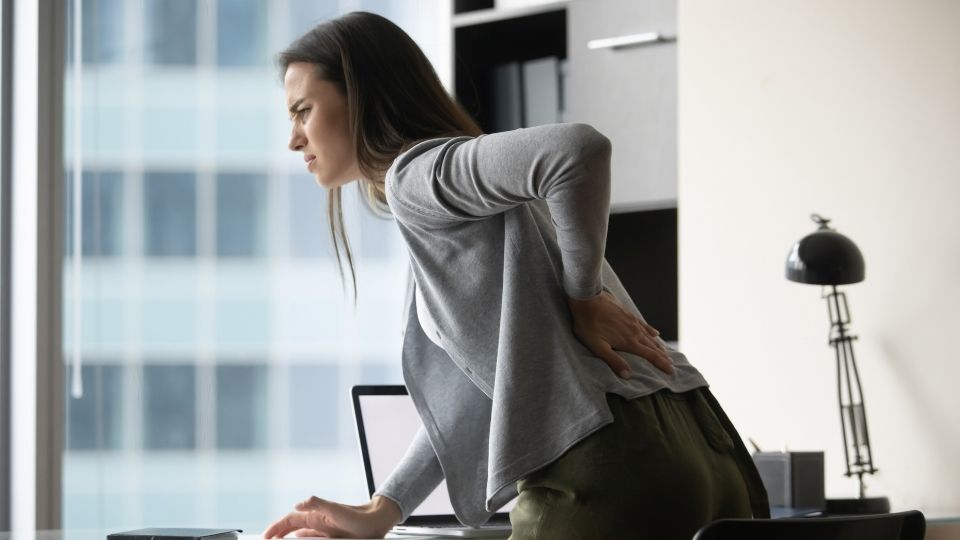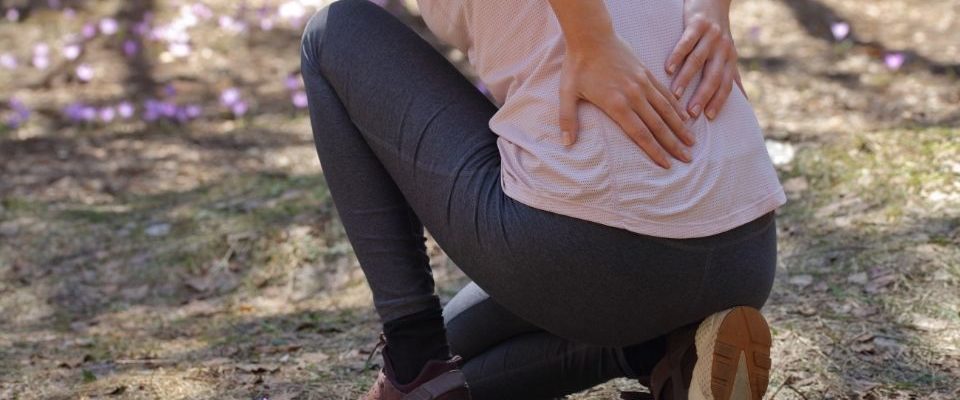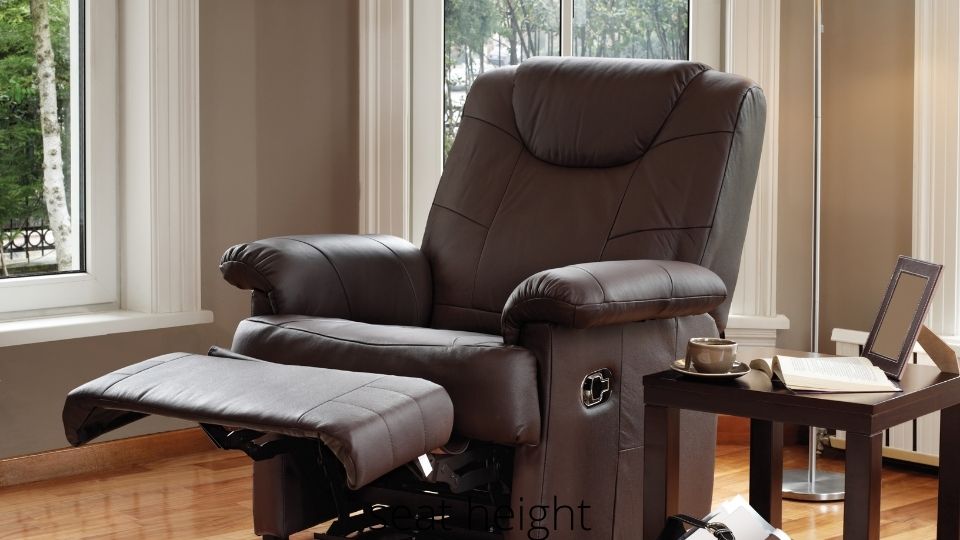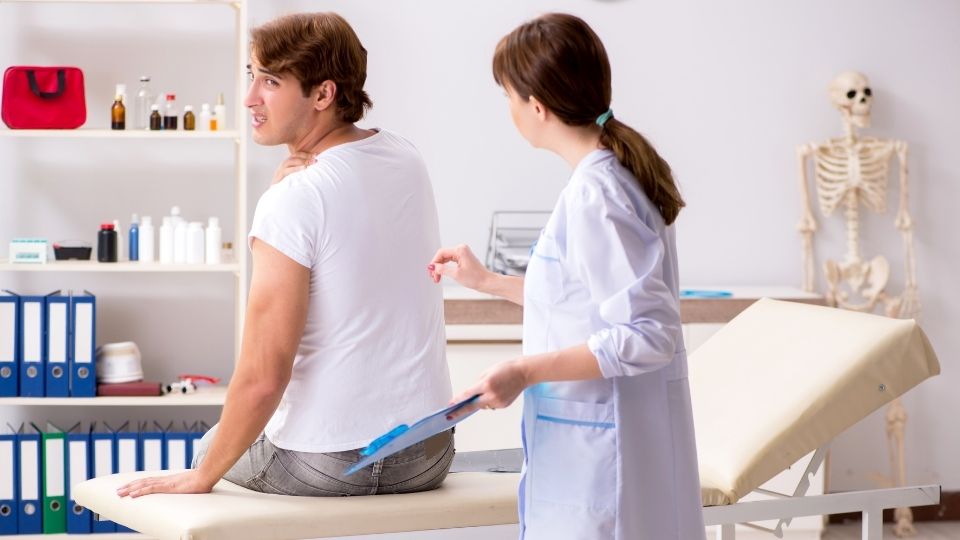Best Sitting Position for Sciatica
Did you know that there is the best sitting position for sciatica? If you are one of the many people who suffer from this painful condition, it is important to find a sitting position that will help relieve your symptoms. In this post, we will discuss the best sitting position for sciatica and provide tips on how to achieve it. Keep reading to learn more!
As a general rule, in order to prevent sciatica, you should sit with both feet flat on the ground, hips at 8-10 degrees higher than knees, and lean back in an upright position. In this way, you can relieve pressure from your gluts, spine, and sciatic nerve.
Keep reading to learn how to ease sciatica while sitting; through my 30 years of advising, treating patients, exploring, designing an orthopedic mattress and neck pain pillow (even a successful Kickstarter campaign!), and I even published a book on this topic.
How to Sit With Sciatica
As a general rule, the best way to sit if you are suffering from sciatica is to get your seat height as high as possible with both feet flat on the floor, use a lumbar cushion, and have your forward seat tilt at an 8 to 10-degree angle.
Best Tip for Leg Pain Relief After Prolonged Sitting?
A solution for leg pain caused by sitting in a chair for prolonged periods of time is to use an orthopedic cushion that helps to promote proper posture and positioning of the spine. This can be a simple and effective way to improve comfort while sitting.
The orthopedic seat wedge will be your best friend when you want to sit comfortably. The extra surface area and higher hip joint angle may allow for more comfort and better posture!
All Day Comfort & Support
Orthopedic Wedge Cushions are a great way to keep you seated upright and comfortable. The forward tilt works with your natural curves of the lower spine, so it’s easy for weight distribution while sitting in this position!
I was surprised how similar cheap memory foam seat cushions were on Aliexpress from the listing on Amazon!
7 Tips for Relieving Sciatica Pain While Sitting:
- Getting up and moving about every twenty minutes or so is essential. This will help alleviate the pain that results from sitting too long!
- Lumbar supports are beneficial for reducing sciatica pain, and in a pinch, you can use a rolled-up towel as support.
- Keep your feet flat on the ground and elevate your seat to the highest level possible. Consider using a footrest if necessary.
- One common suggestion that I give my patients is to sit in a chair to ensure that their hips are positioned higher than their knees. This can help to promote a natural tilt in the forward direction and can potentially lead to increased relaxation in the muscles of the pelvic and spinal regions.
- Increasing your chair’s width is another tip I get great feedback on. Good ergonomic chairs have adjustable seat depths. You should ensure your knees do not touch the edge of your seat any closer than two fingers in depth.
- Stretching your leg muscles while sitting is another way of relieving sciatica pain. Even when you are sitting, move your legs. Extend and contract them. Schedule regular stretching breaks.
- Under your desk, you need to have enough legroom. Store your files, cords, printers, and other items elsewhere, and remove any clutter from under the desk.
Black Friday: 35% Off Today
Typical Delivery 1-3 Days
Here is a video I made on how to prevent sciatica while sitting:
Is It Better to Sit or Lie Down For Sciatica Pain Relief?
As a general rule, bed rest can worsen sciatica, so once you can rise and move, it’s essential for your health and safety. An extended period spent sitting on hard surfaces or driving without breaks will put more pressure on those discs, causing more discomfort!
It is important to remember that nobody can say whether sitting is better as each sciatica sufferer is different, so you must find out what works for you.
It is usually a combination of sitting and standing that helps alleviate sciatica pains. Switching between the two positions as often as required is recommended, but beware of sitting in a low position as standing from a low position can cause additional pain.
If you’re experiencing chronic sciatica pain, your body needs to be perfectly positioned. In general terms, this means avoiding sitting or sleeping incorrectly, which can lead to discomfort and permanent damage over time! The positions that trigger sciatic pain are usually sitting or sleeping without support. For example, we experience far more significant discomfort when we sleep on a soft mattress or sit in a soft chair.
Does Sitting Make Sciatica Nerve Pain Worse?
Generally speaking, sitting typically makes sciatica pain worse. In contrast, choosing the right seat to accompany your sitting can drastically reduce your sciatica pain. To avoid the effects of prolonged periods of sitting or standing, I always recommend that you alternate between sitting and standing frequently.
As a general rule, it is beneficial to keep your legs active when you are sitting or standing for prolonged periods of time. This can help to keep your muscles engaged and may aid in maintaining warmth and promoting blood flow throughout your body.
All Day Comfort & Support
I’ve written a complete hands-on review about why your stomach is flat until you sit down and here are some of the shocking issues I ran into in this post!
Is It Better to Walk or Sit With Sciatica?
Each sciatica patient is different, so no one can say whether or not sitting is better. So during your treatment process, you must figure out what works best. It is usually a combination of sitting and standing that alleviates sciatica pains. Many chiropractors advise switching between the two positions as often as needed, but be careful when sitting in a low position as standing from a low position can be painful.
How to Stop Sciatica Pain When Sitting With Proper Sitting Posture
Sciatica pain when sitting can be unbearable. If you are suffering from this condition, you should consider the following suggestions for your sitting environment:
Sciatica Exercises: Seated Hip Stretch
Here is a video I made with some great exercises for sciatica.
Finding the Right Chair for Sciatica
Investing in an ergonomic office chair with the following minimum requirements may help prevent the pain associated with sciatica:
- Seat height adjustment. If your chair can’t go low enough or high enough, you can fix this by replacing the gas shock to be right for you.
- Capability for a forward tilt may help. Again, if your chair doesn’t have this function, you can quickly get a seat wedge. Make sure you put a thicker wedge on the back of the seat and keep your hips above your knees.
- You want your seat to be able to support your body. The general rule here is that the more surface area you sit on, the fewer pressure points. The distance from the edge of your seat to your knees should be at least two to three fingers.
- Keep moving! Standing up and sitting at least every fifteen or twenty minutes again keeps complacent patterns at bay.
If you are into super easy and inexpensive alternatives to office chairs, I wrote a fantastic article on how and why you should consider these options for back pain, and I encourage you to read it!
Black Friday: 35% Off Today
Typical Delivery 1-3 Days
Getting the Right Mattress for Sciatica
If you’ve ever found yourself waking up from pain in your lower back and hips, then sciatica may be causing the problem. This condition can make sleeping difficult because of radiating sensations down one side or both legs, which makes getting any rest very challenging at times; however, having an appropriate orthopedic mattress to cushion sore spots will take pressure off this area allowing for relief while also giving muscles some time needed relaxation!
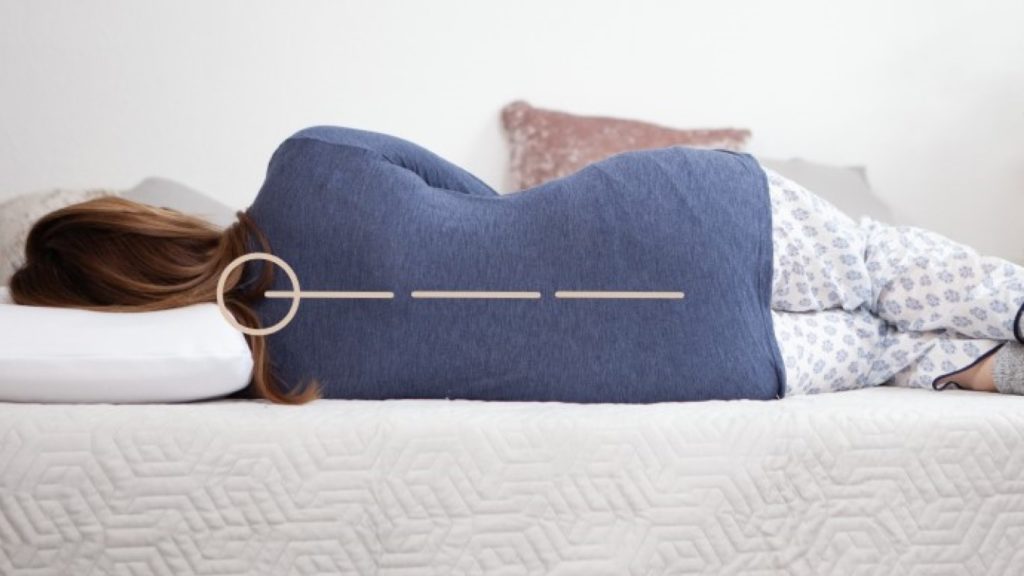
As a general rule, the best mattress for sciatica promotes spinal alignment, has pressure relief, and durability to support, conforms to your body, cradling pressure points while supporting your spine. Look for a mattress that has been designed by a medical expert or chiropractor.
What Should You Not Do With Sciatica?
Sciatica is a common condition that can cause pain in the lower back and legs. While there are many things you can do to help relieve the pain, there are also some things you should avoid doing.
Here are five things to keep in mind when experiencing discomfort or pain in the legs:
- Take breaks and move around frequently, rather than sitting or standing for long periods of time.
- Avoid lifting heavy objects or twisting or bending your body in an awkward manner.
- Be mindful of your movements and avoid sudden or jerky movements.
- Include some light activities or movements throughout the day instead of staying in bed all day.
How Can I Walk With Severe Sciatica?
Walking can be challenging when experiencing discomfort or pain in the legs. To make it easier, it is important to start slowly, gradually increasing the time spent walking. It’s also important to maintain proper posture by keeping your head up, shoulders back, and abdominal muscles engaged. Additionally, wearing supportive shoes with good arch support and stretching before and after walking can help to prevent discomfort or pain. If the pain persists or walking is not helpful, consult with a professional for guidance on other options.
What Triggers Sciatica?
There is not one specific event or activity that causes sciatica. Instead, it results from an underlying condition that puts pressure on or irritates the sciatic nerve. Some common causes include:
-Herniated disc: A herniated disc occurs when the inner, jelly-like portion of the disc leaks out through a tear in the outer layer. This can put pressure on the sciatic nerve and cause pain.
-Degenerative disc disease: This condition results in the deterioration of the discs that cushion the vertebrae. As the discs wear down, they may become less able to protect the nerves, leading to pain.
-Spinal stenosis is a spinal canal narrowing, which can put pressure on the nerves and cause pain.
-Piriformis syndrome: This is a condition in which the piriformis muscle, located near the sciatic nerve, becomes tight or spasms. This can irritate the sciatic nerve and cause pain.
There are many other potential causes of sciatica, so it is vital to see a doctor if you are experiencing pain.
How Do You Calm a Sciatic Nerve?
There are a number of ways to calm a sciatic nerve. Some simple methods include rest, ice, and heat. More complex methods may involve physical therapy or massage. In severe cases, medication or surgery may be necessary. However, most cases of sciatica can be resolved with nonsurgical treatments.
My most successful treatments to calm sciatica are:
- non-surgical spinal decompression
- Class IV laser therapy
- Shockwave therapy
- Spinal Adjustments (chiropractic or osteopathic)
How To Sit on a Couch With Sciatica
With sciatica, there is no honest good advice about how to sit on a couch. The best option would be to avoid it altogether! However, if you sit on your couch, remember to think of the sofa as like alcohol, and you should only use it only in moderation.
How to Get Your Sciatic Nerve To Stop Hurting
Below are some quick things you can do right now to help relieve sciatica:
- The alternating application of heat and ice to the sciatic nerve can provide immediate relief. While heat may help reduce pain while relieving inflammation, ice may reduce swelling. Heat and ice create a physiological pump to reduce inflammation. Heat and ice may also help ease painful muscle spasms that accompany sciatica.
- A powerful natural anti-inflammatory compound called curcumin or turmeric creates an improved immune system and overall health.
- A chiropractor can help you when you have a mechanical problem that may be causing your sciatica. One of my favorite treatments is non-surgical spinal decompression.
- With a deep tissue massage, the spine’s range of motion will be restored, improving its flexibility. Message can also help release muscles’ knots, trigger points, and tension.
Sleeping With Sciatica
Best Lumbar Support for Sciatica
As a general rule, a good option for lumbar support when sitting in an office chair is a cushion made from natural latex foam that can adapt to the shape of your body and provide appropriate support while still allowing for flexibility in your posture.
I found with my patients that a decent lumbar support can help them maintain proper posture and promote comfort. It can also help to redistribute pressure and promote a more relaxed posture. Lumbar support is important for the overall comfort and well-being of the person.
Even though there are several lumbar support products explicitly marketed for chair use, a towel rolled up behind your lower back may work just as well. It’s never too late to get lumbar support; whether you choose a unique lumbar pillow or a roll-up towel, either is convenient and helpful. They’re easy to carry, light enough to transport to and from work, and easy to position on any chair.
Are Reclining Chairs Good for Sciatica?
As a general rule, sciatica sufferers may find that reclining chairs to relieve pain by taking pressure off their lower backs, but the effectiveness of these chairs has been mixed. However, finding a reclining chair that offers the right level of support is vital.
It is important to find a chair that provides adequate support for the lower back, particularly for people who spend a lot of time sitting. A chair that is too soft may not provide enough support. A chair with good lumbar support can help to keep the spine in alignment, promoting comfort and relaxation. Additionally, using a pillow or other support when sitting in a reclining chair can help to maintain the natural curve of the spine and promote a more comfortable sitting experience.
Does Sitting Cross-Legged Help Sciatica?
As a general rule, crossing your legs if suffering from sciatica may not be a good idea. Many believe that sitting with your legs crossed can help, but I can’t find any scientific evidence to support this claim; however, some people swear by it?
In addition, sitting cross-legged is an excellent way to improve your posture and alignment, which can help to prevent sciatica in the first place. If you try sitting cross-legged, be sure to do so with good posture. Otherwise, you may end up exacerbating the pain.
Best Seated Exercise for Sciatica
Exercise may seem like the last thing you want to do for those suffering from sciatica. However, incorporating some simple seated exercises into your daily routine can help to alleviate pain and improve mobility.
An exercise that can help with comfort and relaxation is the pelvic tilt. To perform this exercise, sit upright in a chair with your feet flat on the floor. Slowly tilt your pelvis backward and then forwards, arching your back as you move. You may feel a stretch in the lower back and buttocks. Hold each position for five seconds before returning to the starting position. Repeat the exercise 10 times.
Another helpful exercise is the leg lift. Again, start by sitting up tall in a chair with your feet on the floor. Slowly lift one leg straight out before you, keeping your knee bent. Hold the position for five seconds before lowering your leg back to the starting position. Repeat the exercise 10 times, switch legs, and repeat with the other leg. If you find these exercises too challenging to do from a seated position, you can also try them lying down on your back with your legs bent. Just be sure to keep your back flat on the ground and your knees pointing straight up toward the ceiling.
As always, consult with your doctor before starting any new exercise program. Sciatica can be debilitating, but incorporating these exercises into your daily routine can help ease pain and improve mobility. Give them a try today!
Does Low Heat Help Sciatica?
Many people suffer from sciatica, a debilitating condition that can cause severe pain in the lower back and legs. While there is no cure for sciatica, there are treatments that can help to relieve the symptoms.
One popular method of treatment is to use low-level heat therapy. This involves applying heat to the affected area for some time, typically 15-20 minutes. The heat helps to relax the muscles and reduce inflammation, leading to pain relief. As a general rule, low-level heat therapy may help to improve circulation and promote healing. While there is no guarantee that low-level heat therapy will work for everyone, it is generally considered safe and effective, and it may be worth trying if you suffer from sciatica. Always check with your health practitioner on what’s best for your particular situation.
Does Chiropractic Help Sciatica?
If you suffer from sciatica, you’re not alone. This painful condition affects millions of people each year, causing shooting pain, numbness, and weakness in the lower back, hips, and legs.
As a general rule, chiropractic care is a common treatment for discomfort or pain in the legs. Research has demonstrated that it can be effective in reducing pain and promoting better function. Chiropractors may use various techniques to help alleviate discomfort or pain and often recommend exercises and lifestyle changes to help with overall well-being.
If you’re considering chiropractic care for sciatica, be sure to consult with a qualified practitioner to get the most benefit and avoid any potential risk.
Final thoughts…
This advice I gave you today is based on experience, as I’ve worked with so many people, all of whom spend a lot of time sitting to avoid low back pain issues caused by sitting. You’ll enjoy long-term benefits if you implement these easy changes to your sitting environment.
Several other factors may also play a part in sciatica problems. Getting a proper diagnosis and imaging (like an MRI) is a good idea. One of the primary reasons for this is that we tend to fit into our chairs rather than making them provide us while working at a desk. All of these factors can endanger your physical health. They include leaning forward, reaching for the mouse or keyboard, crossing your legs, the incorrect seat pan, sitting on a stiff seat that is too low, and not having forward tilt control.
Therefore, it is vital to find the best seat for you. What you should remember is that unconscious and complacent movements will end up making you break down. If you stay active and conscious throughout your day, your low back pain may disappear.
Sources:
- Roffey, D.M., Wai, E.K., Bishop, P., Kwon, B.K. and Dagenais, S., 2010. Causal assessment of occupational sitting and low back pain: results of a systematic review. The Spine Journal, 10(3), pp.252-261.
- Hartvigsen, Jan, Charlotte Leboeuf-Yde, Svend Lings, and Elisabeth H. Corder. “Is sitting-while-at-work associated with low back pain? A systematic, critical literature review.” Scandinavian journal of public health 28, no. 3 (2000): 230-239.
- Williams, M.M., Hawley, J.A., McKENZIE, R.A. and van WIJMEN, P.M., 1991. A comparison of the effects of two sitting postures on back and referred pain. Spine, 16(10), pp.1185-1191.
- Gupta, N., Christiansen, C.S., Hallman, D.M., Korshøj, M., Carneiro, I.G. and Holtermann, A., 2015. Is objectively measured sitting time associated with low back pain? A cross-sectional investigation in the NOMAD study. PloS one, 10(3), p.e0121159.
- Heliövaara, M.A.R.K.K.U., Mäkelä, M.A.T.T.I., Knekt, P.A.U.L., Impivaara, O.L.L.I. and Aromaa, A.P.R.O., 1991. Determinants of sciatica and low-back pain. Spine, 16(6), pp.608-614
- Wheeler, A.H., 1995. Diagnosis and management of low back pain and sciatica. American family physician, 52(5), pp.1333-41
- Bernstein, I.A., Malik, Q., Carville, S. and Ward, S., 2017. Low back pain and sciatica: summary of NICE guidance. Bmj, 356.
- Clarke, J.A., van Tulder, M.W., Blomberg, S.E., de Vet, H.C., van der Heijden, G.J., Brønfort, G. and Bouter, L.M., 2007. Traction for low‐back pain with or without sciatica. Cochrane Database of Systematic Reviews, (2)
- Kuslich, S.D., Ulstrom, C.L. and Michael, C.J., 1991. The tissue origin of low back pain and sciatica: a report of pain response to tissue stimulation during operations on the lumbar spine using local anesthesia. The Orthopedic clinics of North America, 22(2), pp.181-187
- Dahm, K.T., Brurberg, K.G., Jamtvedt, G. and Hagen, K.B., 2010. Advice to rest in bed versus advice to stay active for acute low‐back pain and sciatica. Cochrane database of systematic reviews, (6).
- Tubach, F., Beauté, J. and Leclerc, A., 2004. Natural history and prognostic indicators of sciatica. Journal of clinical epidemiology, 57(2), pp.174-179
- Hagen, K.B., Jamtvedt, G., Hilde, G. and Winnem, M.F., 2005. The updated cochrane review of bed rest for low back pain and sciatica. Spine, 30(5), pp.542-546.
- Grøvle, L., Haugen, A.J., Keller, A., Natvig, B., Brox, J.I. and Grotle, M., 2010. The bothersomeness of sciatica: patients’ self-report of paresthesia, weakness and leg pain. European Spine Journal, 19(2), pp.263-269.


